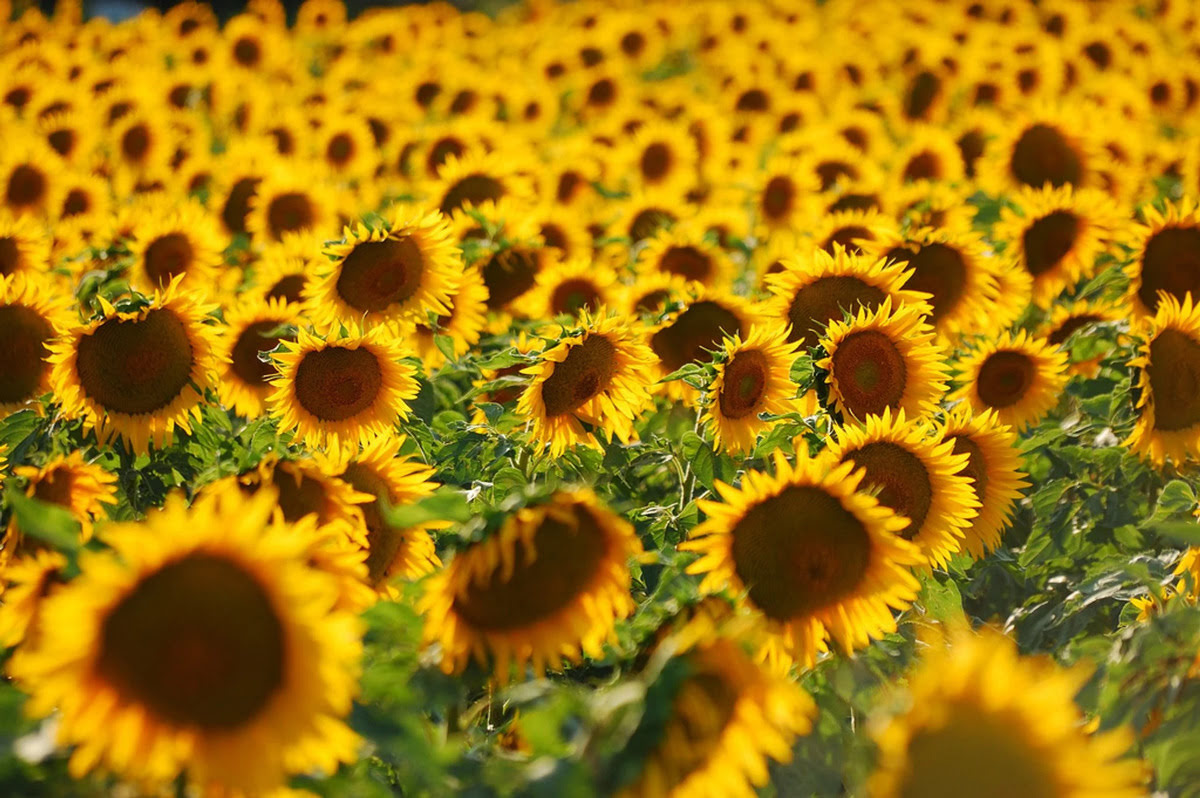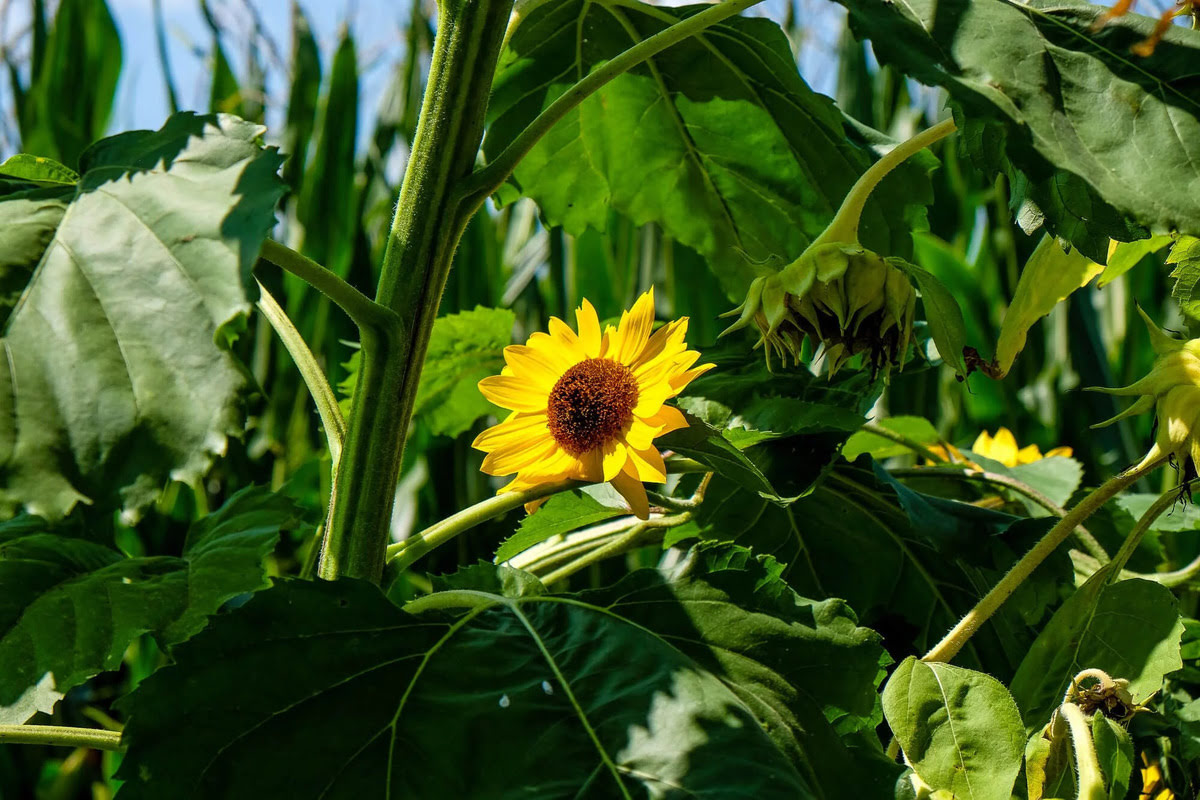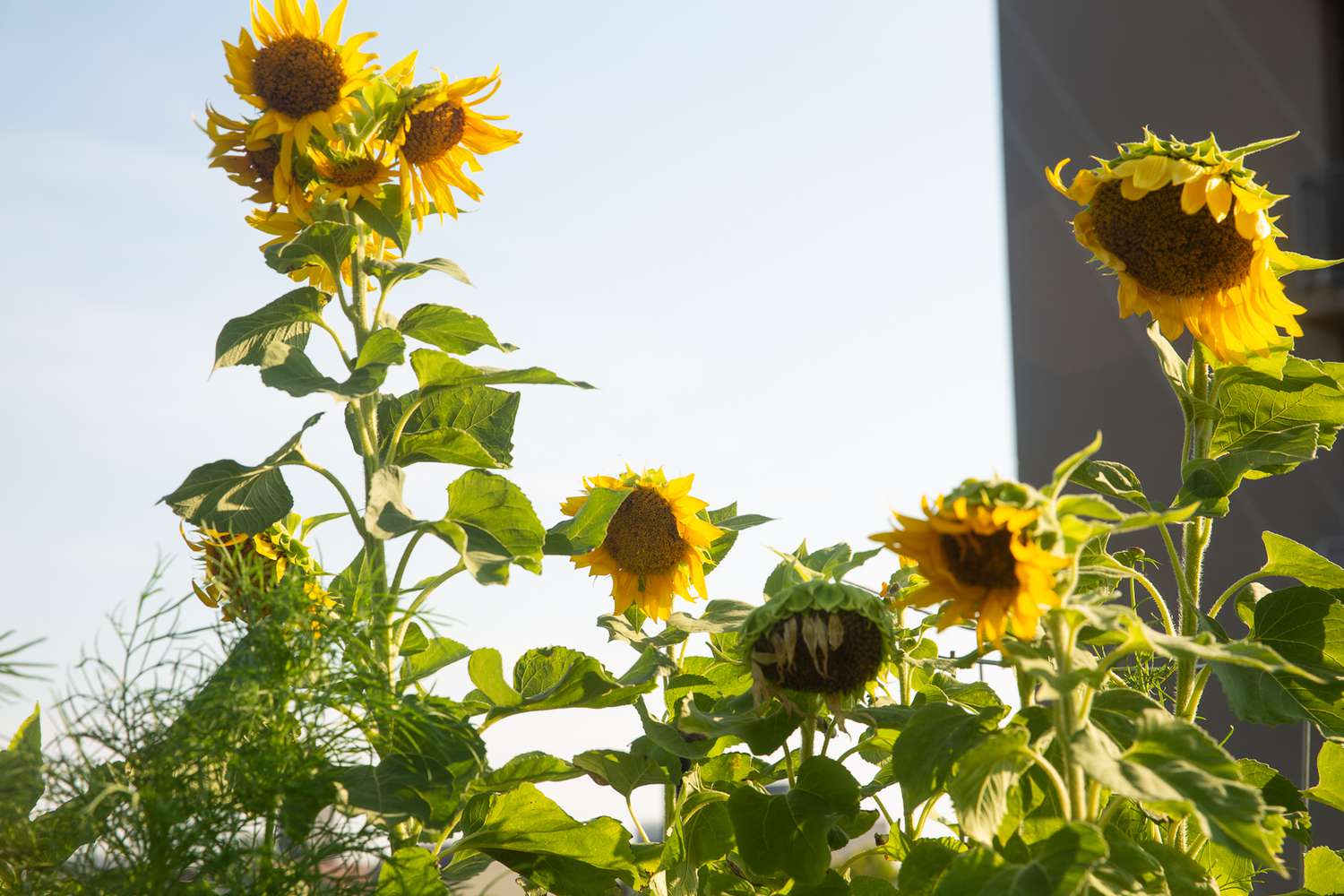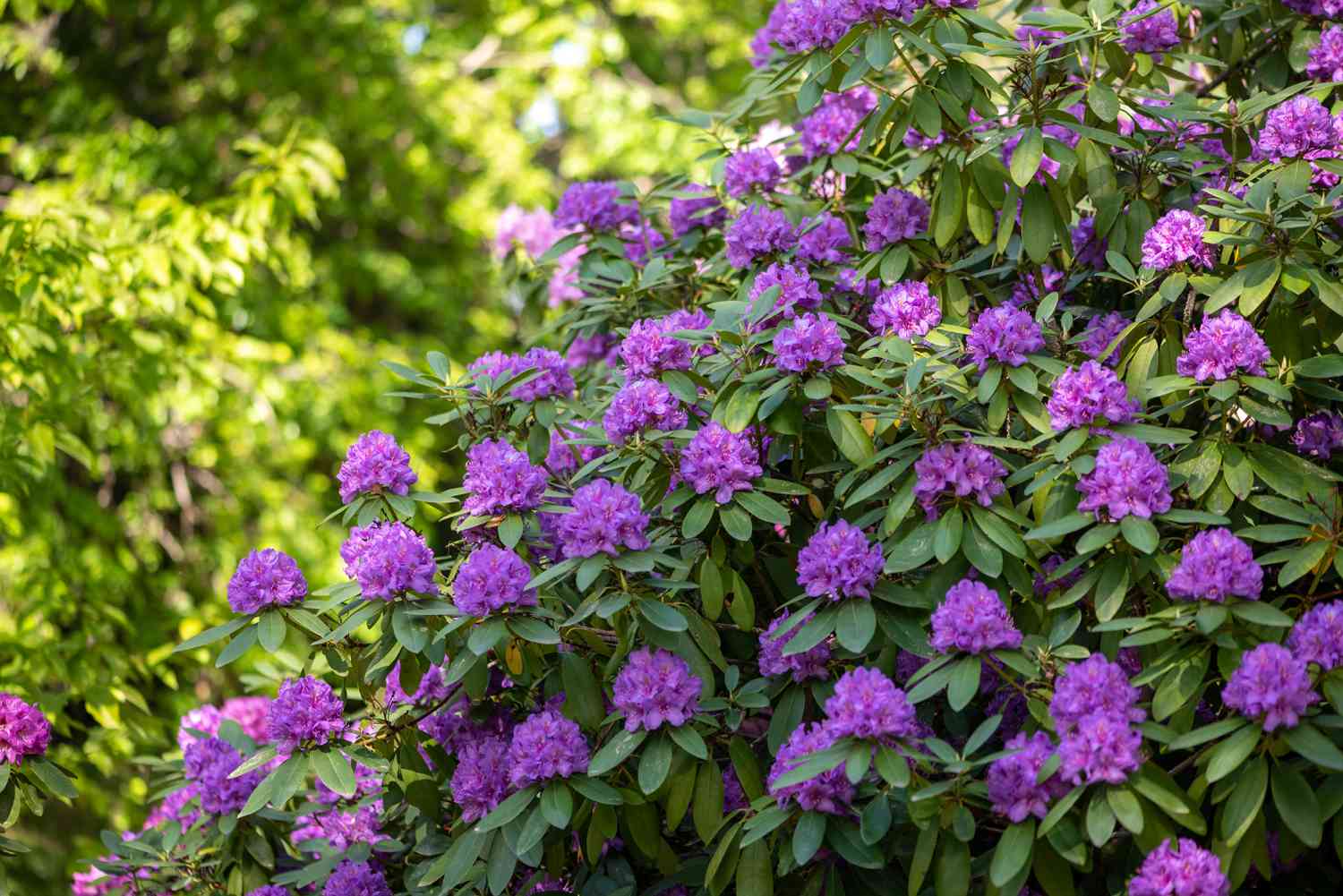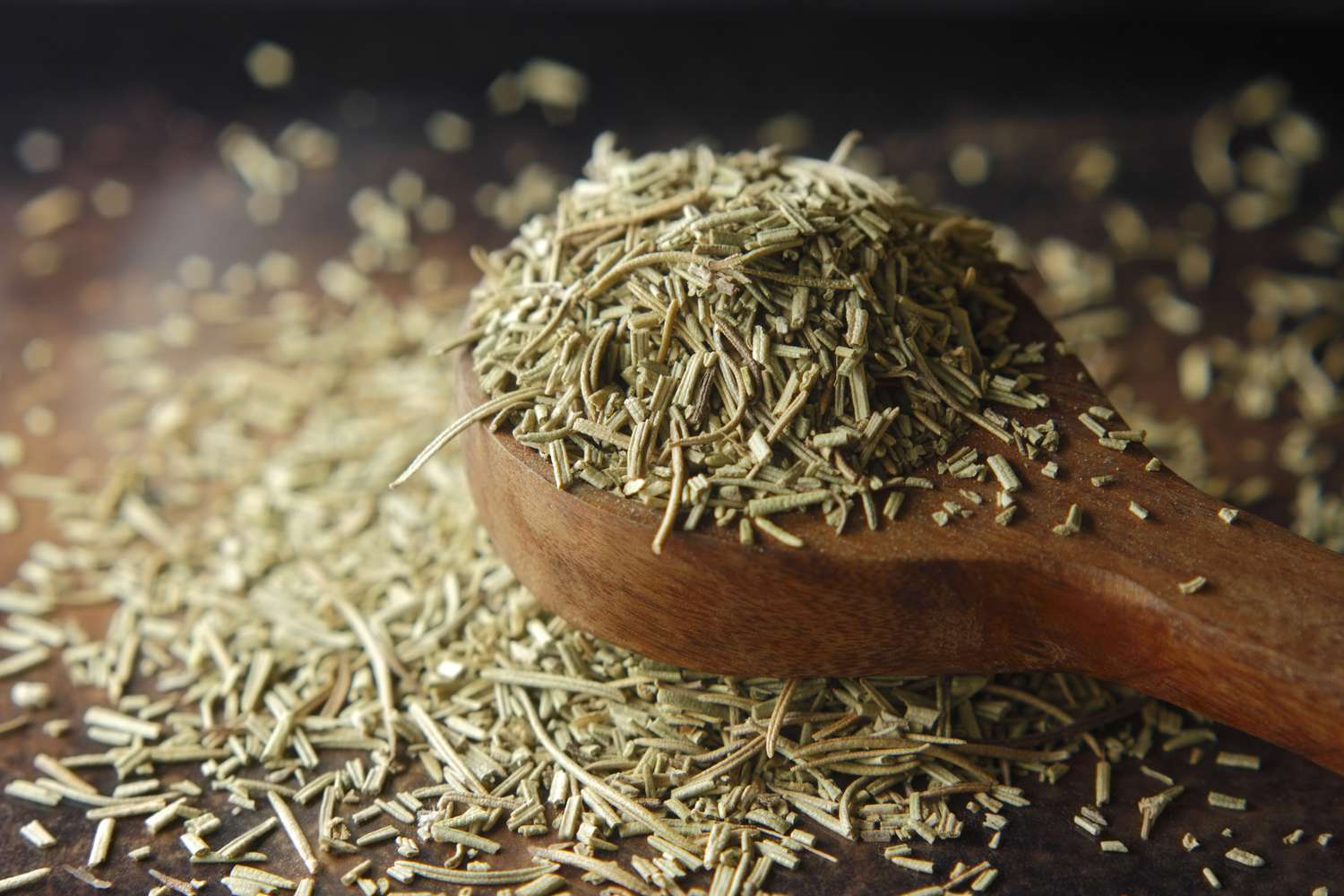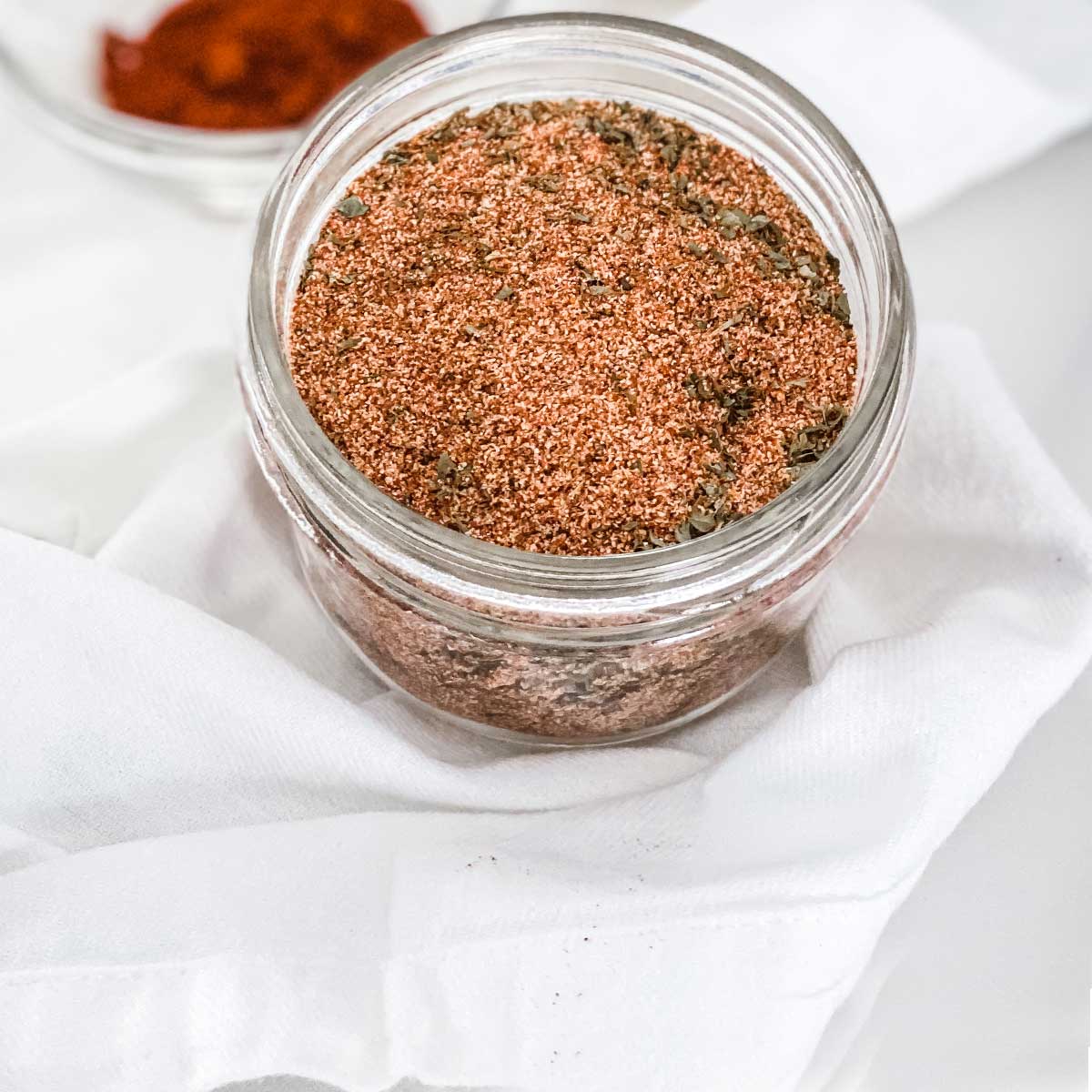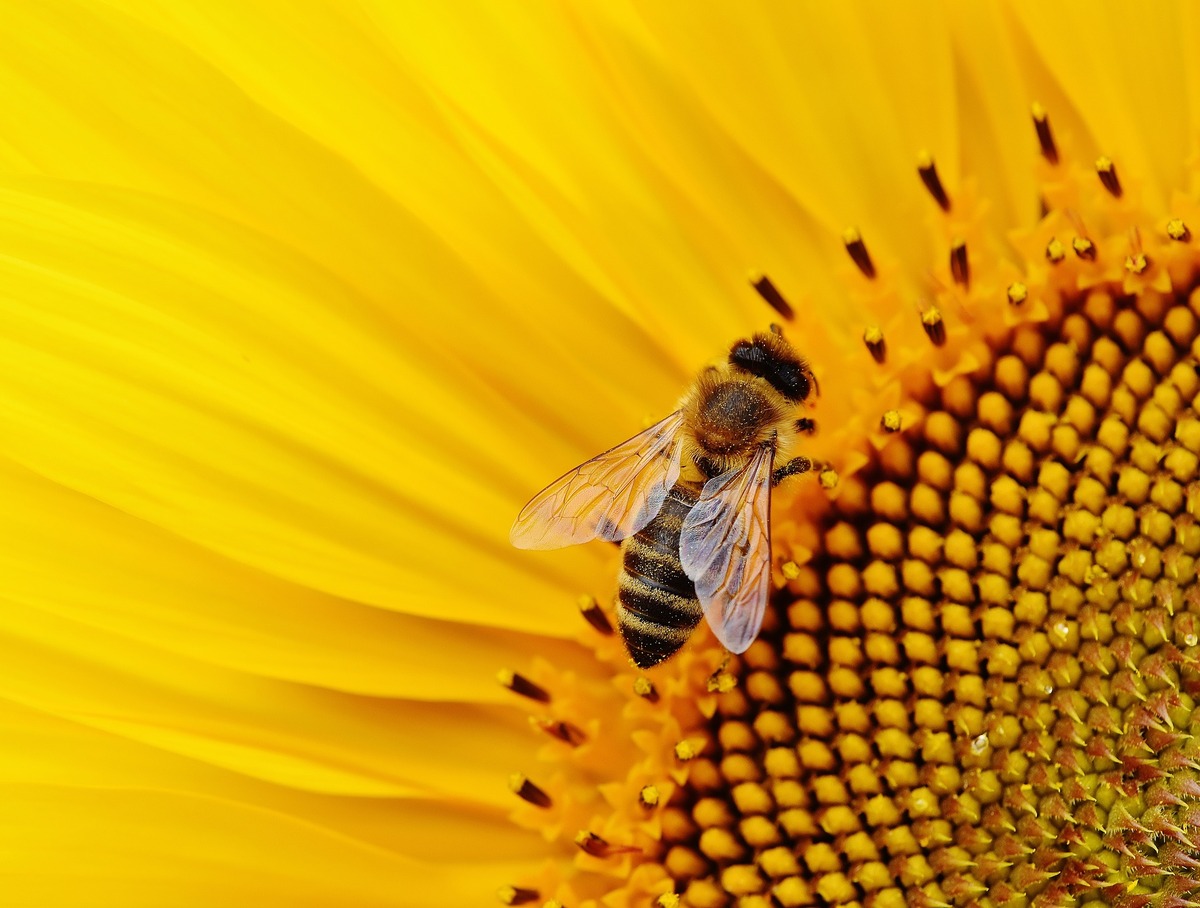Home>Types of Gardening>Ornamental Gardening>What Season Do Sunflowers Bloom


Ornamental Gardening
What Season Do Sunflowers Bloom
Modified: February 7, 2024
Discover the perfect time for sunflowers to bloom in your ornamental garden. Learn all about sunflower growing seasons and tips for successful cultivation.
(Many of the links in this article redirect to a specific reviewed product. Your purchase of these products through affiliate links helps to generate commission for Chicagolandgardening.com, at no extra cost. Learn more)
Table of Contents
Introduction
Ornamental gardening is a delightful hobby for many nature enthusiasts. It allows you to transform your outdoor space into a vibrant and visually appealing sanctuary. One popular flower that adds a touch of sunshine to any garden is the sunflower. Known for their vibrant yellow petals and towering height, sunflowers are a favorite among gardeners. However, to enjoy their beauty, it’s essential to understand when these majestic flowers bloom.
The blooming season of sunflowers is influenced by various factors, including environmental conditions, genetic makeup, and the specific variety of sunflower. By understanding these factors, gardeners can plan accordingly and maximize the blooming period of these stunning flowers.
In this article, we will delve into the diverse factors that affect sunflower blooming and explore the seasonal timing of their blossoms. Additionally, we will discuss the different sunflower varieties and their respective blooming seasons. Lastly, we will provide some useful growing tips to ensure your sunflowers thrive and produce an abundance of blooms.
So, whether you’re a seasoned gardener or a beginner looking to add a splash of sunshine to your garden, let’s dive into the mesmerizing world of sunflower blooming!
Factors Affecting Sunflower Blooming
Several factors play a crucial role in determining when sunflowers bloom. Understanding these factors can help gardeners create the optimal conditions for successful growth and blooming. Let’s explore the key factors below:
1. Sunlight: Sunflowers are heliotropic, meaning they follow the movement of the sun. They require at least six to eight hours of direct sunlight each day. Insufficient sunlight can delay or inhibit blooming, so it’s important to choose a sun-drenched location for planting your sunflowers.
2. Temperature: Sunflowers thrive in warm temperatures. They prefer daytime temperatures between 70 to 78°F (21 to 25°C) and nighttime temperatures above 50°F (10°C). Extreme heat or cold can negatively impact their blooming process.
3. Soil Conditions: Sunflowers require well-draining soil with a pH range between 6.0 and 7.5. Rich, loamy soil with organic matter promotes healthy growth and blooming. Poor soil quality can lead to stunted growth and limited blooming.
4. Watering: Adequate watering is essential for sunflower blooming. While sunflowers are drought-tolerant once established, they still require regular watering during their growing period, especially during dry spells. Avoid overwatering, as it can lead to root rot and other problems.
5. Nutrients: Sunflowers are heavy feeders, requiring a nutrient-rich soil to thrive. Before planting, enrich the soil with compost or well-balanced fertilizers to provide essential nutrients. Phosphorus promotes blooming, so consider a fertilizer with a higher middle number (e.g., 10-20-10).
6. Pollination: Sunflowers are pollinated by bees and other insects attracted to their bright yellow blooms. Ensure your garden has a healthy population of pollinators to aid in the pollination process, which is crucial for fruit and seed development.
7. Genetic Makeup: Different varieties of sunflowers have varying genetic traits, including their blooming time. Some varieties bloom earlier in the season, while others bloom later. Choose sunflower varieties that align with your desired blooming time to enjoy a prolonged flowering display.
8. Planting Time: The timing of planting also affects sunflower blooming. Planting too early or too late in the season can result in poor flowering. Aim to plant sunflowers after the last frost date when the soil has warmed up and the risk of frost has diminished.
By taking these factors into account and providing optimal growing conditions, you can ensure your sunflowers bloom beautifully and bring joy to your garden.
Seasonal Timing of Sunflower Blooming
The blooming season of sunflowers varies depending on various factors, including the specific variety and environmental conditions. However, in general, sunflowers tend to bloom during the late summer and early fall months.
Typically, sunflower seeds are planted in the spring, after the last frost has passed. From the time of planting, it takes approximately 70 to 100 days for sunflowers to mature and begin blooming. This means that if you plant your sunflower seeds in late spring, you can expect to see blooms in late summer or early fall.
The exact timing of sunflower blooming also depends on the specific variety chosen. There are early, mid-season, and late-blooming varieties available, each with its own unique blooming window.
Early-blooming sunflowers, such as the ‘Russian Mammoth’ variety, typically start blooming around 60 to 70 days after planting. These varieties are great for gardeners who want to enjoy sunflower blooms earlier in the season.
Mid-season sunflowers, including popular varieties like ‘Autumn Beauty’ and ‘Sunrich Gold’, usually start blooming around 70 to 90 days after planting. These varieties offer stunning blooms in vibrant colors and various petal arrangements.
Late-blooming sunflowers, such as the ‘Teddy Bear’ and ‘Italian White’, tend to start blooming around 90 to 100 days after planting. These varieties are a great choice for gardeners who want to extend the blooming season and enjoy sunflowers well into the fall.
It’s important to note that regional climate and specific growing conditions can also influence the seasonal timing of sunflower blooming. Cooler climates or regions with shorter growing seasons may experience slightly delayed blooming, while warmer regions may see earlier blooms.
Overall, by selecting the right variety and considering the typical blooming time frame, you can plan and prepare your garden to enjoy the mesmerizing beauty of sunflower blooms during the late summer and early fall.
Sunflower Varieties and Their Blooming Seasons
Sunflowers come in a wide array of varieties, each offering its own unique characteristics and blooming seasons. Let’s explore some popular sunflower varieties and the seasons in which they typically bloom:
1. Russian Mammoth: This variety is an early bloomer, with flowering usually occurring around 60 to 70 days after planting. Russian Mammoth sunflowers are known for their large size, reaching heights of 10 to 12 feet, and their classic yellow petals surrounding a dark center.
2. Autumn Beauty: These mid-season sunflowers begin to bloom around 70 to 90 days after planting. Autumn Beauty sunflowers offer a captivating array of colors, including shades of yellow, orange, red, and burgundy. This variety is ideal for adding a burst of vibrant foliage to your garden during the late summer and fall.
3. Sunrich Gold: Another mid-season sunflower, Sunrich Gold is cherished for its uniform and symmetrical blooms. These sunflowers start to blossom around 70 to 90 days after planting and produce stunning golden-yellow flowers with a dark center.
4. Teddy Bear: Teddy Bear sunflowers are late bloomers, usually beginning to flower around 90 to 100 days after planting. With their compact size and fluffy, double-bloomed petals, they resemble adorable teddy bears. These sunflowers make a charming addition to any garden and create a delightful focal point in late summer and early fall.
5. Italian White: Known for its unique creamy-white petals, the Italian White sunflower is a late bloomer, typically starting to bloom around 90 to 100 days after planting. This variety adds an elegant touch to any garden landscape, complementing other colorful blooms around it.
These are just a few examples of the many sunflower varieties available in the market. When selecting sunflowers for your garden, consider the blooming season and height of the variety to create a visually appealing and well-timed display. Planting a combination of early, mid-season, and late-blooming varieties can ensure a continuous show of stunning sunflower blooms throughout the season.
Growing Tips for Maximizing Sunflower Blooming
To ensure your sunflowers reach their full blooming potential and create a magnificent display in your garden, consider the following tips:
1. Choose the Right Location: Sunflowers require full sun, so choose a location in your garden that receives at least six to eight hours of direct sunlight each day. Avoid areas that are shaded by trees or buildings, as the lack of sunlight can inhibit blooming.
2. Prepare the Soil: Sunflowers thrive in well-draining soil with a pH range of 6.0 to 7.5. Before planting, mix organic matter, such as compost, into the soil to improve its fertility and texture. This will provide the necessary nutrients for healthy growth and abundant blooms.
3. Adequate Watering: While sunflowers are drought-tolerant, regular watering is essential, especially during dry spells. Water deeply, ensuring the soil is moistened to a depth of at least six inches. However, avoid overwatering, as it can lead to root rot and other issues.
4. Fertilize Properly: Sunflowers are heavy feeders, so they benefit from regular fertilization. Apply a balanced granular fertilizer or a slow-release fertilizer at the time of planting and follow up with a side dressing of compost or a high-phosphorus fertilizer once the plants are established. This will provide the necessary nutrients to support vigorous growth and blooming.
5. Support the Stalks: Taller sunflower varieties may require staking or support to prevent them from toppling over due to strong winds or heavy rain. Insert stakes or use mesh netting around the stems to provide necessary support and protect them from damage.
6. Deadhead Spent Blooms: Removing spent blooms encourages continuous blooming by redirecting the plant’s energy towards producing new flowers. Regularly check your sunflowers and snip off faded blooms at the base of the stem.
7. Pests and Diseases: Keep a close eye on your sunflowers for common pests like aphids, spider mites, and slugs. Insecticidal soap or natural remedies like neem oil can help combat these pests. Additionally, maintain good garden hygiene and promptly remove any diseased leaves or plants to prevent the spread of diseases.
8. Save Seeds for Next Season: If you want to grow sunflowers from seed in the following year, allow some sunflower heads to fully mature and dry on the stalk. Collect the seeds and store them in a cool, dry place until planting time.
By following these tips and providing the right conditions, you can maximize sunflower blooming and enjoy a breathtaking display of these magnificent flowers in your garden.
Conclusion
Sunflowers are not only a beautiful addition to any garden, but they also bring joy and a touch of sunshine to our lives. Understanding the factors that influence sunflower blooming, such as sunlight, temperature, soil conditions, and genetics, is key to creating the optimal conditions for these vibrant flowers to thrive.
By planting sunflower varieties that align with your desired blooming season and following some essential growing tips, you can maximize the blooming period of these stunning flowers. Choosing the right location, preparing the soil, providing adequate water and nutrients, and supporting the stalks will all contribute to healthy growth and vibrant blooms. Remember to deadhead spent flowers and keep an eye out for pests and diseases to ensure your sunflowers stay in prime condition.
Whether you’re enjoying the early blooms of Russian Mammoth varieties, the dazzling colors of Autumn Beauty and Sunrich Gold, or the late-season charm of Teddy Bear and Italian White sunflowers, each variety offers its own unique beauty and contributes to the overall splendor of your garden.
So, don’t hesitate to embrace the enchanting world of sunflowers in your ornamental gardening endeavors. With their towering height, bright colors, and captivating blooms, sunflowers will undoubtedly add a touch of radiance and charm to your outdoor space. Start planning your garden, choose the right varieties, and create the perfect conditions for sunflower blooming. Get ready to be mesmerized by the magnificent display as these sun-worshipping flowers turn your garden into a floral paradise!
